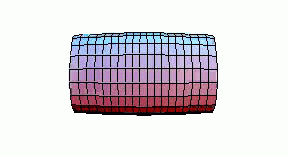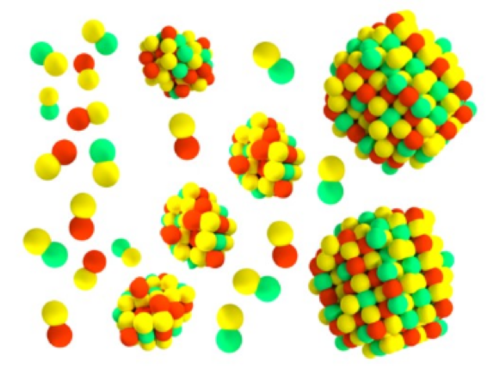Capabilities Overview
What knowledge, materials and equipment do we need to be capable of doing the research?
Theory and Modelling
Theory and Modelling of Excitons
The Theory and Modelling Capability will support the Research Themes by developing a computational materials design methodology that will provide the design rules for next-generation Excitonic materials and their devices by modelling their structure and properties.
Key Modelling Capabilities will include:
- Discovery of New Excitonic Materials by High Throughput Computational Materials Design
- Multi-scale Ab-initio Modelling of Exciton Dynamics, Charge separation and Recombination
- Modelling the dynamics of exciton transport and processes
Current Capabilities Include:
- Mathematical and computational models for 2D and 3D electronic spectroscopy of exciton dynamics.
- Finite element modelling of nanomechanical devices and energy dissipation.
- Analytical and computational models for understanding morphology and dynamics in molecular and nanoparticle assemblies
Spectroscopy & Measurement
Spectroscopy & Measurement
The Spectroscopy & Measurement Capability underpins the measurement of the physical properties of excitons, including energy, lifetime, transport and dissociation.
The centre includes capabilities for:
- Ultrafast exciton generation across the UV, visible and NIR spectral regions.
- Time resolved and/or spatially resolved detection of both exciton emission (photons), spin-state, transport and exciton dissociation products.
- Single molecule/nanoparticle detection up to bulk, film, or ensemble samples.
Current Instrumentation:
- Laser excitation in the ns-ps-fs regimes across UV-visible-NIR spectrum
- Time-correlated single photon counting (picoseconds-nanoseconds)
- Visible/IR femtosecond transient absorption spectroscopy
- Femtosecond fluorescence (upconversion, Kerr gate)
- Femtosecond multiple pulse photon echo spectroscopy
- Nanosecond flash photolysis
- Time-resolved fluorescence imaging (FLIM)
- Total internal reflection fluorescence microscopy
- Super-resolution optical microscopy techniques (STED and SIM)
- Single molecule and nanoparticle spectroscopy
- Confocal and Dark-field microscopy
- Scanning near-field optical microscopy (SNOM)
- Solar simulator
- Low temperature cryostats (liquid nitrogen/helium)
- Visible and near-infrared Hyperspectral imaging (400-1620 nm with 2-5 nm resolution)
Materials and Synthesis
Materials and Synthesis
The Materials and Synthesis Capability will support the Research Themes by developing novel Excitonic materials with high luminescence, strong absorption characteristics and long diffusion lengths, that operate across the visible and IR spectral regions, for Excitonic device applications.
Materials to be investigated will include:
Quantum Confined Inorganics (e.g. QDs, QRs, QWs)
Bulk Organic-Inorganic Hybrid Materials (e.g. perovskites)
Organic Dye Assemblies (e.g. fullerene, P3HT derivatives, coupled chromophores, NIR up-converters).
Quantum Confined Inorganics (QDs, QRs, QWs)
Control of composition, size and shape of nanoparticles.
Multilayer structures for exciton manipulation.
Well-defined surface modification for exciton coupling.
Bulk Organic-Inorganic Hybrid Materials
New ferroelectric bulk materials for photovoltaics.
Tune crystal composition and structure to improve stability.
Control of crystal growth to achieve defect-free films.
Organic Dye Assemblies
Novel molecular structure and geometry for excitonics.
Polymeric and supramolecular assemblies for exciton transport.
Targeted materials design, synthesis and scale-up.


Devices and Prototyping
Devices and Prototyping
The ARC Centre of Excellence in Exciton Science will work on the development of new energy-efficient devices and energy storage structures such as solar cells, luminescent solar concentrators, and exciton up-conversion systems. The full application potential of emerging excitonic materials will be showcased and explored in prototype devices. We will work towards novel device designs that are compatible with low-cost fabrication techniques. The integration of the multitude of excitonic technologies developed in this Centre into integrated 3rd generation photovoltaics such as tandem solar cells and PV-integrated solar concentrators and upconverters will be a key focus. In addition, the Centre will explore novel spin-control devices and systematic optimisation of device parameters to facilitate translation and prototyping through partners such as CSIRO and Chinese partners.
Key Infrastructure
The Centre has extensive infrastructure for device fabrication including
- complete solar cell characterisation systems (e.g. simulators, spectral response, a wide range of impedance based techniques and stability testing)
- wide range of printing and deposition technologies (e.g. screen, spray, spin coating, dip coating, sputtering and thermal evaporation)
- clean room access (class 100-10000) at the MCN, CSIRO, RMIT facilities (including EBL, FIB, RIE and nanoimprinting.)
- wide range of deposition methods including EBE, sputter coating, thermal ebeam evaporation, and electroplating and 3D printing.
- Roll-to-roll printing and slot die coating facilities at CSIRO.



